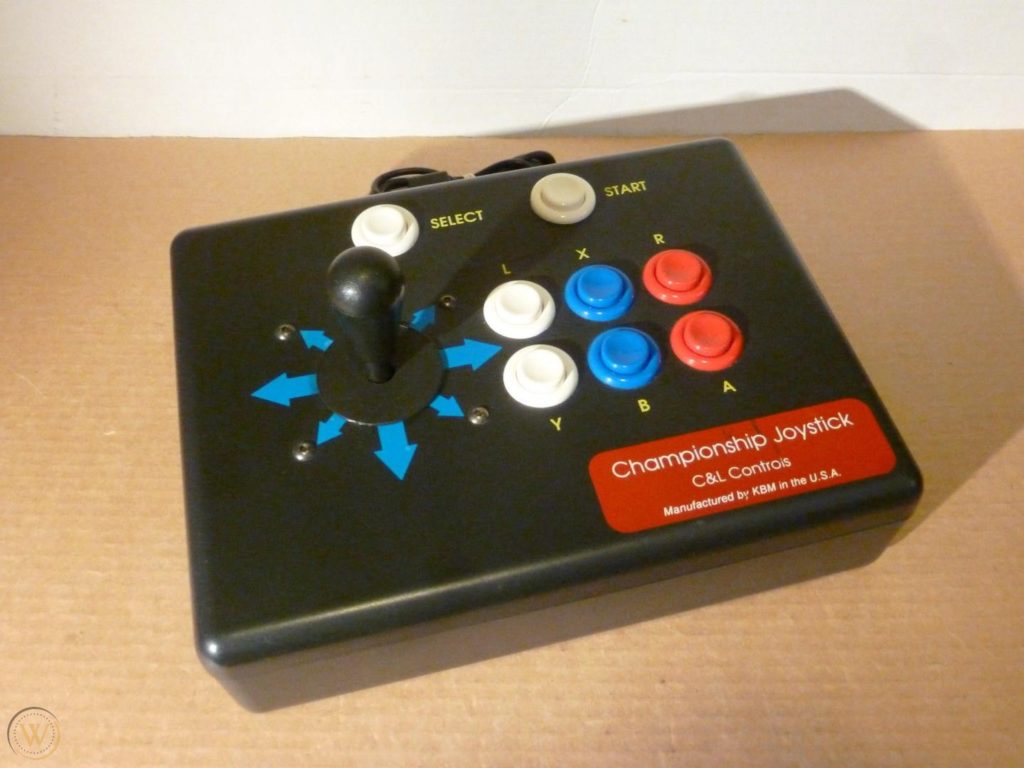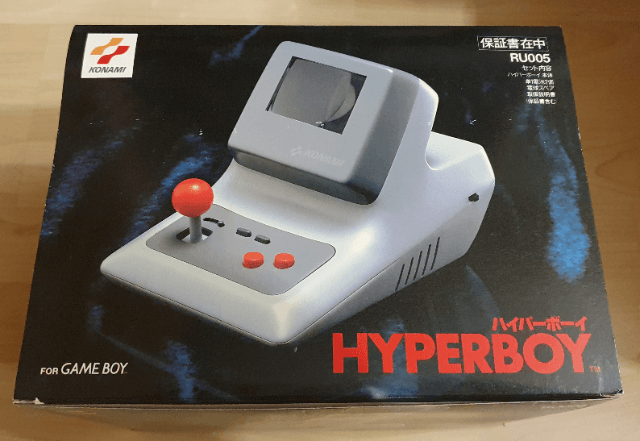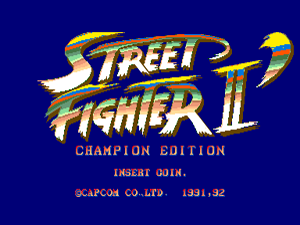Sometimes I wonder if any other game has had as big an impact on me, than Street Fighter II. It seemed that no matter how many times Capcom revised, re-imagined, or re-skinned the game, or branched out into other media, I couldn’t get enough.
SF2 was a game I’d gotten hooked on well before I’d ever played it. Seeing the graphics and variety of characters in Electronic Gamic Monthly and other magazines, it was certainly a game I’d play if given then chance. I was 11 years old when it debuted, and the only arcade I was able to visit with any sort of frequency was at the Summit Place Mall in Pontiac, MI.
I don’t think I’d even seen a SF2 machine in person – much less played it – until the Champion Edition was released. It was 1992, and my 6th grade class took a week-long field trip to Toronto, Canada. One of the first places we’d visited was the CN tower, and one of my main takeaways from the whole experience was being able to play SF2:CE for the first time in the arcade at the tower’s base. It was everything I’d hoped it would be, and more. And of course I got my ass kicked, because while I’d read up on the moves and combos extensively, I had no idea how to actually perform them.
A day or two later in the Toronto trip, we all had a free day to explore the city. My then-best-friend and I came across a game shop that, to me, might as well have been Candyland. It wasn’t the biggest game store I’d ever been to, but it was the most well-stocked that I’d seen up to that point. No space was wasted. They even had accessories I’d never seen anywhere but in the ads in the back of EGM, like the Hyperboy Gameboy mini-arcade mount… thing.
What stood out the most at that store, though, was SF2:CE hooked up to a TV in the front of the store, via a Supergun Jamma harness, another thing I’d only read about in EGM. And for $20, my friend and I could play the game with unlimited continues for 30 minutes. My mom wasn’t too thrilled about that – either the price or having to stand there for 30 minutes while we played – but we had fun.
My last SF2-related memory from that trip might’ve been the day we’d left. We were at a bus station early in the morning, just in time for the arcade there to open. We had time to kill, and whether the manager did it intentionally or if it was just a standard power-on thing, all the games were free to play for the first 10 minutes or so. This arcade didn’t have SF2, but it did have plain old Street Fighter, which surely would be almost as good, right?
…yeah, no. It sucked.
When SF2 was released for the Super Nintendo later in 1992, I was ecstatic. Yeah, it was a little disappointing that it wasn’t the Champion Edition, but it was still Street Fighter II, and I could play it as much as I wanted. And by this point the arcade at Summit Place had a Champion Edition machine, which I’d also play whenever I had the chance.
SF2:CE always drew a fairly large crowd, at the mall. If you wanted to play, you’d put your quarter up at the bottom of the screen, and wait your turn. Unless this one guy was playing. The Pro. An Asian-American dude with hair that went down to his hips. I don’t know if he played SF2 on a tournament level – if that was even a thing, at the time – but he did know all the moves and combos, and was pretty much unbeatable. But everyone wanted the momentary bragging rights that’d come from defeating him, so we all lined up our quarters on that machine, and we all lost, every time.
The only time I’d get to play SF2:CE on any sort of equal footing, was after Mortal Kombat was released later that year. The Pro moved on to that game along with everyone else, and he kicked wholesale ass at that one as well.
Christmas of ’92 may have been one of the biggest for me, in terms of gaming. My parents had gotten me a Sega CD, Night Trap, Sonic 2… and a Championship Joystick for the SNES. The funny part about the joystick is how much of a surprise it was, after everyone had unwrapped their gifts and cleaned up. I’d gone back to my room to hook up the Sega CD and take it for a spin, when my dad came back to ask what I thought about the controller. I was confused, and had to ask “what controller?”
My parents owned a small business in Union Lake, MI. The building had a storage room in the back, where they would store my & my brothers Christmas gifts. But because it also had a fair amount of the shop’s inventory, it might’ve been easy for some things to get overlooked. That’s what had happened on this particular Christmas – while loading up the gifts the night before, one got left behind – the joystick.
When my dad realized that the joystick had been left behind, he got in his truck and went back to the shop. 20 minutes later, I had a surprise gift to unwrap!
Having that joystick felt like leveling up – it felt like the arcade controls, because it used arcade parts. It made the home version of SF2 feel that much closer to its bigger counterpart.

Another stand-out SF2 experience might’ve been in the summer of ’93, at a weekend car show my dad was attending in North Carolina. The show was between the hotel and a mall – the Four Seasons Town Centre – and where there was a mall, odds are there’d be an arcade. And indeed there was, right near the entrance!
This arcade had a rainbow edition of SF2:CE. I didn’t know that mod chips and bootlegs were a thing at the time, but I could tell that something about this game was different, just from the title screen. The game itself was pretty nuts – projectile speeds, depending on the button you pressed, were either so fast that your opponent would have little time to react, or so slow that you could walk up behind your own fireball. Projectiles could also move diagonally, nearly every move could be performed in the air, and you could change your character by hitting your start button. It was wild.
Another great thing about visiting new arcades, was the chance to see and play games that your usual ones didn’t have. Apart from SF2:CE Rainbow, this arcade also had World Heroes 2, and Martial Champion. While World Heroes 2 was definitely the better of those two by far, Martial Champion stood out because of its large character sprites. I felt it was a shame that the only home port was exclusive to the PC Engine CD, in Japan.
One more thing that made that weekend special, to me – Coca-Cola in 16 oz. cans. Today I look at normal 12 oz. cans as being too much, but as a sugar-addicted adolescent, having that much more Coke in one serving was one of the best things ever.
Piracy and unofficial enhancements to SF2 apparently were so rampant, Capcom had to do whatever they could to compete. Several months after Champion Edition and the SNES release of SF2, SF2: Hyper Fighting was released. Playing it at the arcade – when The Pro wasn’t there, drawing a crowd – made it difficult to go back to the home edition, which felt so slow by comparison.
The home edition of Street Fighter II Turbo would arrive several months later, in August of ’93. Just in time for my birthday! And then just one month later, Super Street Fighter II would land in arcades. By that point it was starting to feel as if Capcom was taunting me specifically.
Speed-wise, Super SF2 felt like a downgrade, but the new characters, moves, and combos were the big draw. I also thought it was funny that Guile’s voice was now the same as the announcer’s, which wasn’t very masculine.
September of ’93 also saw the release of the Special Champion Edition for the Sega Genesis/Mega Drive. At the time I thought it was a joke that the Genesis was a version behind the SNES, not realizing that the Genesis version had all of the Turbo features (and then some), just under a different name.
By this point, my familiarity/obsession with SF2 was such that I was picking out the differences between the arcade and home versions. The arcade had more (and smoother) animations, and the sprites were bigger. The Genesis game’s music sounded much closer to the arcade, compared to the SNES. The Genesis voice samples were also closer to the arcade, but sounded worse than the SNES ones at the same time, due to how compressed they were. My friends at the time made fun of me for noticing these things. That certainly hurt at the time, but looking back, I can hardly blame them. Maybe I should have been more interested in music, as they were, except I felt most popular music in ’92-93 sucked.
Summer of 1994 would see the release of Super SF2 on the SNES and Genesis. The SNES version might’ve been the first game I’d purchased with my own money, which also gave me my first taste of buyers’ remorse. The game was as accurate to the arcade as the SNES could get, but the fact that Super SF2 Turbo had been in arcades for several months by this point stung a bit. I felt like I’d paid $80 for an inferior game.
A year later, Super Turbo was released for MS-DOS. I didn’t hesitate to buy it… despite the fact that my family would not own a computer until some months later. And once we did have a computer, the game’s sound wouldn’t work. Graphically it looked exactly like the arcade game, but the lack of any sound robbed it of its impact. By that point, Street Fighter II had been my #1 gaming obsession for 3 years, and showed no signs of stopping…


